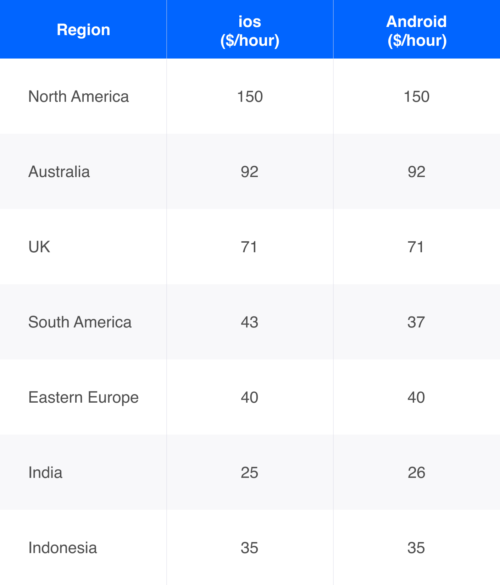Medicare initiated a payment system to pay hospitals a fixed amount for patient care based on a diagnosis-related group (DRG). In the 2010s, additional Value-Based Purchasing (VBP) programs were added to further drive health outcomes and reduce costs. In a final push, by 2030 CMS aims to have 100% of its traditional Medicare beneficiaries receiving healthcare through value-based programs. “At their core, value-based care models seek to maximize value for patients by achieving the best health outcomes at the lowest cost while improving the patient experience. To meet this goal, value-based care models move beyond ‘sick care’ and toward a proactive, coordinated, and data-driven approach that puts patients first and helps them get and stay healthy. The behavioral health industry has historically lagged behind physical healthcare in adopting value-based and outcomes-based care models.
In 2008 CMS began focusing on VBP, with its Hospital Value-Based Purchasing Program emphasizing an enhanced quality of care and a better experience during hospital stays for patients. The agency has since added programs related to reporting requirements and payment under this health care delivery approach. Paying for outcomes requires providers to measure and report on patient progress. This makes it much more reliant on data analytics than traditional fee-for-service reimbursement models.
Insider Buying and Selling
Value-added pricing involves bundling services or features with the main product to offer customers more value for their money. This is commonly used when companies have a unique offering and want to differentiate themselves from competitors. Good value pricing is based on the premise that customers are willing to pay a fair price for a product as long as it meets or exceeds their expectations.
- Find out the key factors that drive value for your customers, such as features, benefits, quality, convenience, brand reputation, and more, to understand the elements that matter most to your customers.
- Value-based pricing provides the flexibility to quickly modify pricing strategies based on changing customer preferences and market conditions in dynamic industries with frequent market shifts.
- But in a value-based care model, there is an established rate that covers everything involved with the knee surgery.
- Fish adds that when healthcare organizations consistently demonstrate that they offer high-value care, they may also experience financial benefits compared to providers with less impressive statistics.
- You may have heard that “value-based care” is attracting attention in the healthcare world.
In contrast, newer value-based care payment models reward providers for the outcomes of their services. The facility above would have to demonstrate that the services improved the patient’s health, using measurements related to the condition treated and expected outcomes. In other words, the increase in services wouldn’t automatically increase reimbursements for that hospital stay. Chan goes on to explain that in a value-based care model, providers are rewarded for things like successful surgical procedures, reduced effects and incidences of chronic disease, and measurably healthier lives.
How would value-based care work?
Doctors are playing an important role in moving the dial toward higher-value care, identifying when treatment may be excessive, unnecessary or incorrect. Hopefully, we will continue to move in a direction that lowers costs, places patients at the center of care, promotes teamwork and clear communication, and creates an overall healthier society. Keep in mind that the point of value investing is to resist the temptation to panic and go with the herd. So don’t fall into the trap of buying when share prices rise and selling when they drop.

Longterm care insurance is issued by Northwestern Long Term Care Insurance Company, Milwaukee, WI, (NLTC) a subsidiary of NM. Investment brokerage services are offered through Northwestern Mutual Investment Services, LLC (NMIS) a subsidiary of NM, brokerdealer, registered investment advisor, and member FINRA and SIPC. Investment advisory and trust services are offered through Northwestern Mutual Wealth Management Company (NMWMC), Milwaukee, WI, a subsidiary of NM and a federal savings bank.
Building the Ideal Patient Care Cycle: Centralized Patient Care through a Patient Portal in Behavioral Health
Plenty of companies develop and sell their products efficiently, then charge prices that meet value-based and cost-plus criteria. A “fair price” could also be a combination of factors such as convenience, quality goods, and premium customer service. Premium airlines, for instance, charge considerably higher prices than economy carriers, but passengers happily pay the difference for a better travel experience. The value-based approach value based meaning goes beyond traditional cost-plus pricing, which simply calculates costs and adds a predetermined profit margin. As value-based care gains momentum, the advantages to practitioners of learning about and implementing this care model will only grow. Providers who want to stay on the leading edge of healthcare practices would do well to learn about VBC and to invest in the technology that makes its implementation possible.

Take note of anything that suggests an obstacle to growth or a marked downward trend in revenue, headcount, or production. Supplement this with market research via online searches and trade publications that show broader industry and business need. Almost no customer I know comes to a sales call wanting to talk about product features. Equally as important, they want you to do it in a way that shows how the benefits of your solution outweigh the status quo.
Are there other value-based programs?
The statutory requirements of the Hospital VBP Program are set forth in Section 1886(o) of the Social Security Act. The program uses selected measures that were first specified under the Hospital Inpatient Quality Reporting (IQR) Program. It improves health care outcomes and reduces costs, according to the Cleveland Clinic. Value-based purchasing is a departure from the traditional fee-for-service (FFS) health care delivery model. Under that approach, insurers pay providers based only on the volume of their services.

She explains that during the first year of treating patients in an upstate Michigan county, for example, the insurance company paid Homeward Health a fee per patient without any risk dollars involved. Quantify the perceived value of your product based on the identified value drivers and set a price that aligns with the perceived value. Consider premium pricing if your offering provides unique and highly valued benefits. That being said, it’s worth noting that research has shown that many values-based funds perform just as well as other broader market funds. What’s more, companies prioritizing environmental and social factors have historically tended to outperform their competitors who didn’t. First, spend some time learning about your prospect via the buyer’s LinkedIn page, website, and quarterly financial reports (if relevant).
Value-Based Care in Pharmacy: A Promising Approach to Improving Patient Outcomes and Reducing Costs
Value-based pricing provides the flexibility to quickly modify pricing strategies based on changing customer preferences and market conditions in dynamic industries with frequent market shifts. If your customer base consists of various segments with different needs and willingness to pay, using value-based pricing allows you to tailor pricing strategies to cater to each segment’s specific value perception. Find out the key factors that drive value for your customers, such as features, benefits, quality, convenience, brand reputation, and more, to understand the elements that matter most to your customers. The fundamental idea is that consumers will pay more for products or services they believe to be of greater personal value. In this article, we comprehensively explore the concept of value-based pricing and show you how to create an effective value-based pricing strategy.
Under fee-for-service, there is a separate bill for each service involved with the procedure, including the surgeon’s fee, the anesthesiologist’s fee, the facility fee, the cost of the physical therapy, the implant itself, etc. The pricing is often set by adding a desired profit margin to the total cost. In this approach, the focus is on covering costs and ensuring a certain level of profitability. For one, it’s an additional factor that can complicate an investment strategy.
Harnessing the Power of Pharmacy: Elevating Medication Safety and Adherence in Ambulatory Care Settings
The statement of cash flows lists everywhere cash came from and went to in a company. It tells you which activities created inflow, such as operating, investing, or financing activities. Use this data to fine-tune the price according to customer sentiment or demand, and monitor it regularly for any changes in customer behavior. Researching market trends, such as average customer lifetime value (CLV) and penetration rate, will let you know if the demand for your product is worth pursuing or not.
A 2020 research article in Health Affairs predicts that health costs will account for nearly 20% of the U.S. gross domestic product by 2028. VBP helps address the high cost of health care — and improves patient satisfaction while doing so. Today’s education programs for emerging leaders, such as the Executive Master of Health Administration online program in the USC Sol Price School of Public Policy, focus on VBP and its effects on patient outcomes. In a value-based system, providers such as hospitals and doctors are paid based on patient outcomes, rather than the current “fee-for-service” model.
Market” represents the consequences of emotionally reacting to the stock market, rather than rationally or with fundamental analysis. Market” speaks to the price fluctuations inherent in markets, and the emotions that can influence these on extreme scales, such as greed and fear. It is difficult to ignore your emotions when making investment decisions. Even if you can take a detached, critical standpoint when evaluating numbers, fear and excitement may creep in when it comes time to actually use part of your hard-earned savings to purchase a stock.
